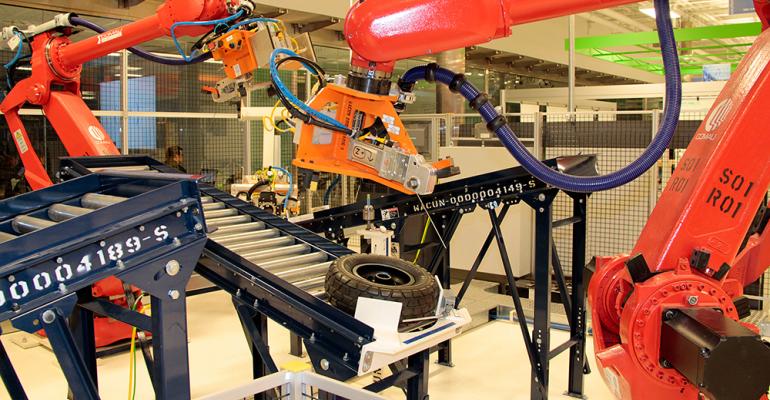WARREN, MI – Chrysler has expanded the size and offerings of the World Class Manufacturing Academy it operates here in partnership with the UAW.
The training facility recently was expanded to 40,000 sq.-ft. (3,716 sq.-m) from 25,000 sq.-ft. (2,322 sq.-m) and the number of classes offered increased from just four when it opened in 2012 to 45 today. The automaker says 9,000 participants have trained at the facility since it opened.
As part of the expansion, the WCM Academy added two classrooms with seating for 130 participants and redesigned six hands-on learning stations. Additionally, the facility incorporated a “Workplace Integration Room,” which simulates a production line but replaces vehicles with go-karts.
The automaker says the go-kart line teaches participants how to identify issues and form solutions. Two Comau robots, identical to those found in Chrysler body shops, also were added. The automaker says WCM participants are taught to be familiar with the sights and sounds of the robots so it is easier to predict when maintenance is needed, leading to less potential downtime.
The main purpose of WCM, implemented by parent Fiat in 2006 and expanded to Chrysler in 2009, is to teach engineers and plant personnel how to reduce waste, increase productivity and improve quality and safety in a systematic and organized way.
Marcel Breault, head of WCM-Chrysler, says the automaker based the WCM methodology on the best practices of various plants, including those of competitors in North America and Europe.
“When (Chrysler’s) bankruptcy came through we said, ‘Where do we go from here?’” he says. “(Parent company) Fiat came along, put us back on the road, and said, ‘You’re going to get WCM, and it’s not going to be something to negotiate, it’s a must in our plants.’”
WCM course material is created internally with input from the plants and based on specific needs to increase levels of competence in critical areas. Many of the classes take a unique hands-on approach, incorporating simple games to teach basic concepts.
Chrysler says the WCM Academy played a critical role in the launch of the all-new ’15 Chrysler 200 midsize sedan by training nearly 100 employees from the Sterling Heights, MI, assembly plant in the WPI class. Participants were encouraged to take their learning back to the plant and pass them on to team members.
In addition to the WCM Academy, Chrysler last year launched a mobile classroom housed in a trailer that is used for training in plants in other states. Since its launch, the mobile unit has hosted nearly 1,800 employees, the automaker says.
Chrysler last month opened a satellite academy in Mexico, which will train workers at five manufacturing sites in the country.
While WCM at its core is meant to reduce waste and increase productivity and quality, it is not aimed specifically at avoiding major issues, such as the recent string of high-profile recalls that have spread across the industry, says Scott Tolmie, the lead of the WCM Academy.
Tolmie says the academy incorporates a “quality gate,” a tool to measure the quality improvements that occur from the time an operator first mans his workstation to the time he is transferred to another post.
Although the facility and the program offerings have been expanded, demand for WCM training is exceeding the academy’s capabilities, Tolmie says.
“We continue to have 1,800 or more names of people with projects on plant ledgers requesting to come for training,” he says. “We’re not the only place at (Chrysler) that does training, but plants know if they need extra help to come here.”





